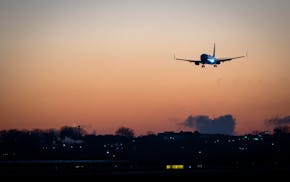Job growth in Minnesota started off the year even stronger than initially reported, but then slowed down in February.
Revisions to the first jobs report of the year showed the state added 7,900 jobs in January. That is more than double the 3,000 jobs initially estimated.
But then in February, the state added just 100 more jobs, according to numbers released Thursday by the Minnesota Department of Employment and Economic Development (DEED).
State officials said the pause in February was nothing to be worried about and that the state's economy remained in good shape.
"Minnesota has seen really strong job growth for a long time," said Angelina Nguyễn, director of DEED's labor market information office. "We look like we're a little slower now, but we're not declining. We still see good steady growth."
And for the third month in a row, wage growth in Minnesota outpaced inflation. Average hourly earnings rose 4.2% over the year in February, compared to the 3.2% annual increase in the U.S. consumer price index.
In February, the state unemployment rate also remained at 2.7% and the labor force participation rate held steady at 67.9%.
Minnesota continues to outperform the U.S. on both those metrics, with the national jobless rate coming in at 3.9% last month and the participation rate at 62.5%.
But the U.S. has seen faster job growth in the last year. Employment grew 1.8% for the U.S. through the last 12 months compared to 1.3% for Minnesota.
One of the state's challenges is that it has an aging workforce so it is having a hard time finding enough workers to keep up with the demand for jobs.
"The state is working to draw more younger workers to Minnesota and to help more people who aren't in the labor market or who are underemployed prepare for and land jobs in high demand sectors." said Kevin McKinnon, a deputy commissioner at DEED.
Toward that end, Gov. Tim Walz along with officials from DEED announced about 35 recipients earlier this week of nearly $20 million in grants as part of the "Drive for Five" initiative. The program provides funding to workforce training and other business organizations across the state to prepare more workers for jobs in five industries facing a shortage of labor: technology, trades, caring professions, manufacturing and education.
The program aims to train and place an estimated 1,200 workers into jobs in those fields over the next 15 months.

Bushel Boy, Minnesota's local tomato grower, sold
After 60 years, federal cuts shutting down Job Corps center in St. Paul

In a first, Minnesota doctors walk their own picket line, then hustle to see patients
It's harder to find a job this year, especially a corporate position
